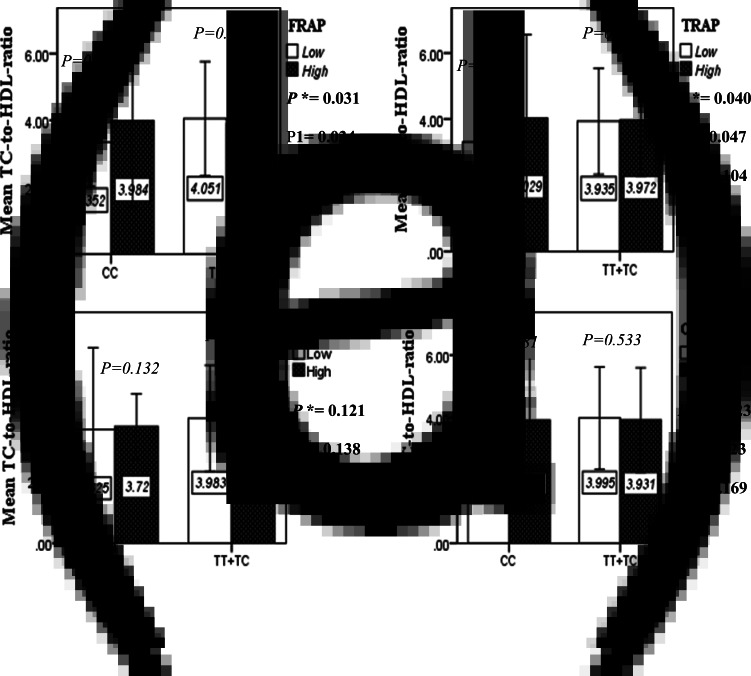Fig. 2E.
The interaction between APOA2 -265 T>C polymorphism and the DTAC: FRAP (a), TRAP (b), TEAC (c), and ORAC (d) intake on TC- HDL-ratio. According to the median dietary TAC the participants were dichotomized into “high” and “low” categories (≤, > of median), FRAP (≤15.94, 15.95 > mmol Fe2+/d); TRAP (≤8.25, 8.26 > mmol TE/d); TEAC (≤7.46, 7.47> mmol TE/d); ORAC (≤27296.21, 27296.22> μmol TE/d). P*; crude, P1; model 1, and P2; model 2. P*-values for the interaction terms between dietary TAC intake (as dichotomous) and the APOA2 polymorphism in each population were obtained in the General Linear Model (Two-Way ANOVA). The P1 value of the interaction (Model 1) is adjusted for age (as continuous) and smoking (as categorical), fiber, and total energy intake (as continuous). In model 2, in addition to the variables of model 1, it was also adjusted based on the variables of sex (as categorical), supplement use (as categorical), lipid-lowering medicine (as categorical), and BMI (as continuous) using the ANCOVA test. Independent Samples t-test was used to compare the mean TC/HDL between low and high DTAC intake base on rs5082 genotypes. The bars indicate mean (SD).

